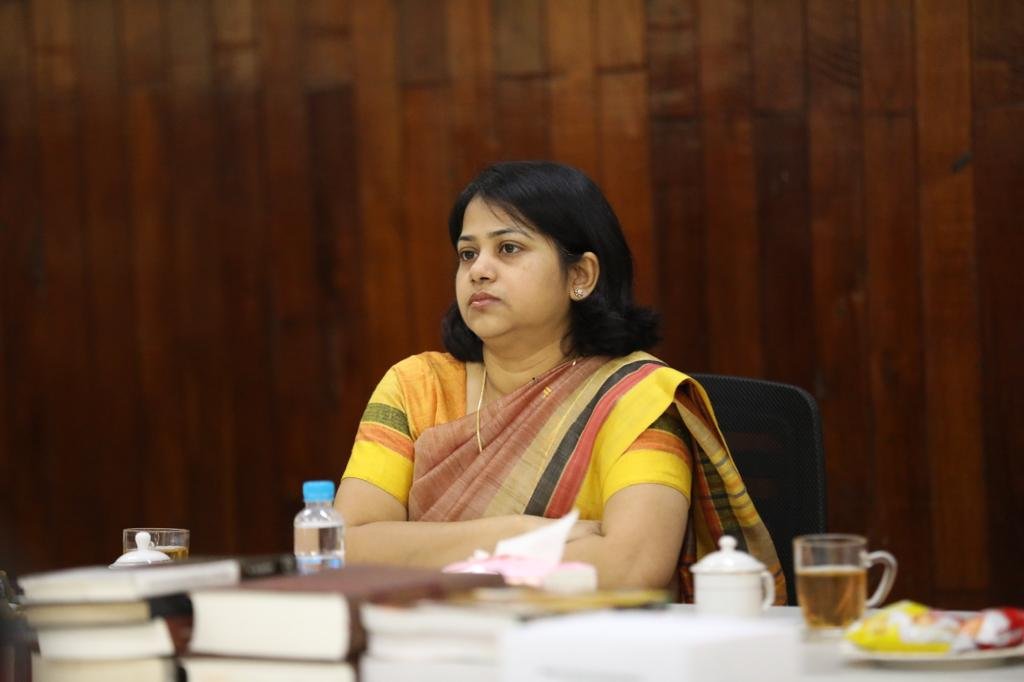
At a seminar organised by the Research and Information System for Developing Countries (RIS) on April 14, 2025, in New Delhi, Ms. Nabanita Chakrabarty, Joint Secretary of the Indo-Pacific Division, Ministry of External Affairs, stressed upon India’s Act East Policy—a policy that has, over the past decade, emerged as a cornerstone of India’s regional diplomacy and Indo-Pacific vision.
Speaking on a day marked both by solemn national remembrance and regional celebration—Ambedkar Jayanti and festivals like Vaisakhi, Bihu, Vishu, and Puthandu—Ms. Chakrabarty captured the symbolic resonance of such a gathering. “It is an absolute delight to be here today—even more so because, despite this being a closed holiday, we have all come together in the spirit of reflection and dialogue,” she remarked. Her words set the tone for a discourse rooted in both introspection and forward-looking resolve.
Recounting the genesis of the Act East Policy, Ms. Chakrabarty noted that while India’s “Look East” outreach began in 1992, it was in 2014 that the initiative gained renewed momentum. Under Prime Minister Narendra Modi’s leadership, the transformation from Look East to Act East signaled a shift from aspiration to action. “This marked a pivotal moment that brought a more proactive, practical, and partnership-driven focus to our engagement with ASEAN and the wider Indo-Pacific,” she emphasised.
Over the past decade, the policy has not only re-energized India’s historic ties with Southeast Asia but has also expanded the scope of regional cooperation. Central to this vision has been the emphasis on ASEAN centrality and the launch of the Indo-Pacific Oceans Initiative (IPOI) in 2019—an initiative that Ms. Chakrabarty highlighted as having “gained significant traction” since its inception.
In her address, she drew attention to the multifaceted nature of India’s engagement with ASEAN, characterized by connectivity, development partnerships, educational collaboration, cultural linkages, and growing economic and security cooperation. “Connectivity—physical, digital, economic, and people-to-people—is the lifeblood of our cooperation,” she said, spotlighting ongoing infrastructure efforts such as the India-Myanmar-Thailand Trilateral Highway and the India-Middle East-Europe Economic Corridor (IMEC), which aims to connect ASEAN to Europe through India.
Highlighting the growing ease of travel and interpersonal exchange, she noted, “We now have direct air connectivity with eight ASEAN countries and hope to add the Philippines later this year.” The ongoing celebration of the ASEAN-India Year of Tourism in 2025, she added, is expected to boost cultural and economic linkages, particularly in India’s Northeast.
The digital domain, too, is becoming a vital arena for cooperation. “The ASEAN-India Fund for Digital Futures has become operational, and our first cyber policy dialogue was successfully held last year,” she said, reflecting India’s commitment to shaping a secure and inclusive digital order in partnership with ASEAN.
Educational and cultural exchanges have played a critical role in reinforcing the civilizational bonds between India and Southeast Asia. “Our shared heritage is best exemplified by the historic Nalanda University, whose modern campus was inaugurated by the Prime Minister last year,” Ms. Chakrabarty said. Over 300 ASEAN students have graduated from the university in the past decade, and India has doubled its scholarship slots to 90—an investment in both education and diplomacy.
From startup festivals and youth summits to music and art exchanges, India’s soft diplomacy has grown vibrantly under the Act East banner. These engagements, as Ms. Chakrabarty observed, are “platforms that bridge communities and ideas across borders.”
India’s development partnership with ASEAN is underpinned by four major funding mechanisms: the ASEAN-India Fund, the ASEAN-India Science & Technology Development Fund, the ASEAN-India Green Fund, and the ASEAN-India Fund for Digital Futures. Since April 2024, more than 650 participants from ASEAN member states have taken part in training programs in India. Milestones such as the first Women Scientists’ Conclave and the approval of 43 collaborative R&D projects underscore the depth of scientific and academic collaboration.
In the economic and security spheres, ASEAN remains a top trading partner for India. The ongoing review of the ASEAN-India Trade in Goods Agreement (AITIGA) aims to make the pact more “user-friendly and business-oriented.” On the security front, India continues to act as a first responder in times of crisis. Referencing the recent earthquake in Myanmar and Thailand, she shared that “India launched Operation Dhamma, delivering humanitarian aid to Myanmar.” Additionally, the recent Memorandum of Intent between India’s National Disaster Management Authority and the ASEAN Coordinating Centre for Humanitarian Assistance (AHA Centre) marks a significant step in institutionalizing regional disaster response cooperation.
Ms. Chakrabarty also acknowledged the pivotal role of regional mechanisms in anchoring India’s Act East approach. “India continues to engage actively with ASEAN-led platforms such as the East Asia Summit, ASEAN Regional Forum (ARF), ADMM-Plus, and others, reaffirming our support for a rules-based Indo-Pacific,” she stated. Expressing anticipation for Malaysia’s upcoming ASEAN Chairmanship in 2025, she affirmed India’s full support for “advancing inclusivity and sustainability.”
Looking to the future, preparations are underway for high-level ASEAN-India engagements, a country review of AITIGA, and a series of tourism-related events, many in collaboration with RIS, to showcase the cultural wealth and strategic importance of Northeast India.
Concluding on a note of optimism and continuity, Ms. Chakrabarty assured, “While time may not permit me to touch upon every area of cooperation, I assure you that ASEAN-India relations are thriving, and the Act East Policy continues to evolve as a powerful instrument of regional engagement.”
Leave a Reply